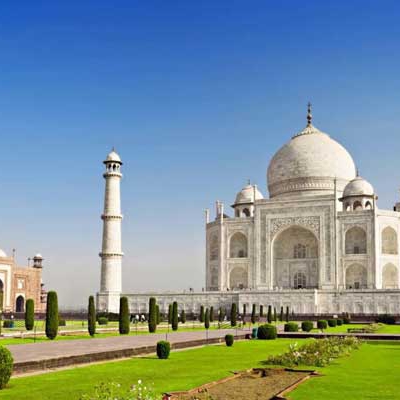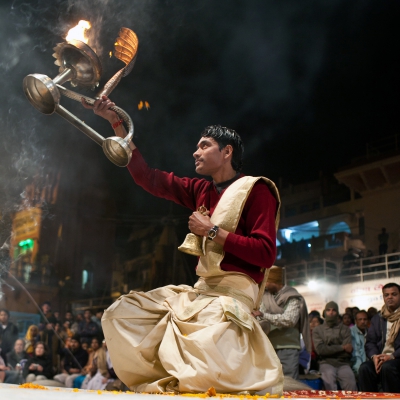Agra Fort
The Agra Fort, commonly called the Red Fort of Agra, is situated in the city of Agra and is recognized as a UNESCO World Heritage Site. One of the most significant and best-preserved forts in the nation, its history stretches back to the sixteenth century. Although the fort is sometimes eclipsed by the opulence of the nearby Taj Mahal it is nevertheless a notable historical and architectural landmark in its own right.
Architecture
In 1565 AD Akbar the third Mughal emperor began building Agra Fort. Subsequent kings like Jahangir, Shah Jahan and Aurangzeb however made numerous additions and changes. The fort reflects the blending of cultures during the Mughal era with its blend of Persian and Indian architectural styles. Situated along the Yamuna River the fort occupies around 94 acres and is distinguished by its red colour due to its construction of red sandstone. Agra Fort is a series of palaces and pavilions that each display elaborate Mughal architectural elements. Blending Persian and Indian architecture, the Jahangir Palace was constructed by Akbar and later rebuilt by Jahangir. It has several courtyard gardens, domed chhatris (pavilions), and elaborate balconies. The palace of Khas Mahal is made of white marble and has exquisite decoration and architecture. The emperor used it as his own home. The Mirror Palace, also called Sheesh Mahal, is decorated with elaborate mirror work that, when lit, produces a stunning image.
Significant buildings within the Agra Fort
About Diwan-i-Aam and Diwan-i-Khas
The fort's two main buildings, the Hall of Public Audience (Diwan-i-Aam) and the Hall of Private Audience (Diwan-i-Khas), each had a specific function. In the public pavilion known as Diwan-i-Aam, the emperor gave speeches and listened to complaints from the populace. Its facade is composed of many arches. The monarch had private talks with significant dignitaries in the more sedate and elaborately decorated Diwan-i-Khas.
Jahangir Palace
This palace, which was constructed by Akbar and then restored by his son Jahangir, is a superb illustration of the blending of Persian and Indian architecture. It has several apartments, courtyards, and elaborate balconies. The Mughal emperors' taste and fashion are evident in the palace.
Moti Masjid (Pearl Mosque)
Inside the Agra Fort complex lies the modest white marble mosque known as the Moti Masjid, built by Shah Jahan. The mosque's architecture is straightforward but elegant, with three onion-shaped domes.
Musamman Burj
A tower called Musamman Burj is situated beside the fort's river. For Mumtaz Mahal, his favourite queen, Shah Jahan constructed it. A broad perspective of the Yamuna River and the Taj Mahal is offered by the octagonal tower. During his captivity, Shah Jahan spent his final days in Musamman Burj.
In general, those who want to experience Mughal architecture, learn about India's rich past, and take in the scenic surroundings of this historic site should make time to visit Agra Fort. Because of its close proximity to the Taj Mahal, it is an essential component of travellers’ experiences in Agra.
Best time to visit : In order to experience the most comfortable weather for sightseeing, it is preferable to visit Agra Fort in the winter, which lasts from October to March.
Opening & closing time : It’s open all days from 6:00 am to 6:00 pm
*Note: Agra Fort is open from Sunrise to Sunset
Entry Fee:
For Indians: Rs 50 per person; On Fridays Rs 40 per person for Indians
For foreigners: Rs 650 per person; on Fridays Rs 600 per person for foreigners
Children under the age of 15 are free.
Agra Fort Timings for the Light and Sound Show
- Hindi Show: 30 minutes after sunset
- English Show: Immediate after Hindi Show
- Entry Tickets Prices for the Light and Sound Show
- Indian Rs 70 per person
- Student Rs 40 per person
- Foreign tourists: Rs 200 per person
- Children below Age 15: Free
How to reach:
By Air: The Indira Gandhi International Airport (DEL) in Delhi is the closest airport to Agra located roughly 220 km away. You can take different forms of transportation or hire a taxi from the airport to get to Agra.
By Train: Agra Fort Railway Station is one of the main train stations in the city and there are several train connections available in Agra.
By Road: National highways connect major cities with Agra, which has a well-developed road network.
FAQ:
What is within Fort Agra?
The Mughal kings constructed the vast complex known as Agra Fort. Within Agra Fort, there are numerous halls, both tiny and great palaces, and other historical landmarks.
How much time is required to visit Agra Fort?
You need around 2–3 hours to explore Agra Fort properly.
How many gates is Agra Fort equipped with?
The Agra Fort has two entrance gates: Delhi Gate and Lahore Gate. Only the Lahore Gate also called the Amar Singh Gate allows tourists to enter.
On which day is Agra Fort closed?
It's open year-round.






